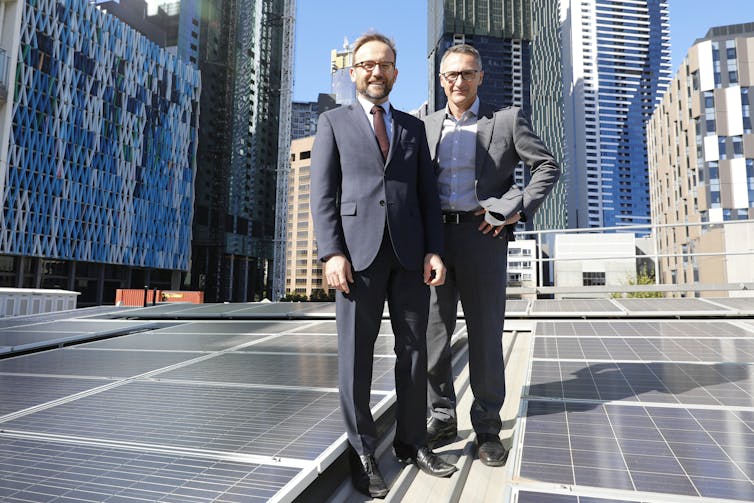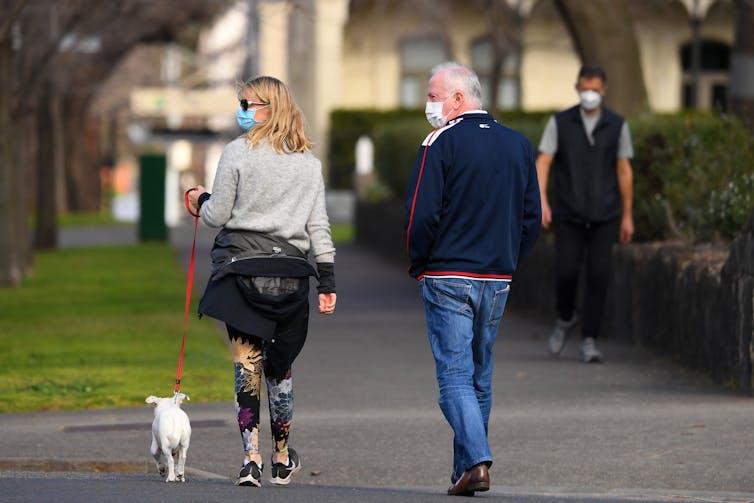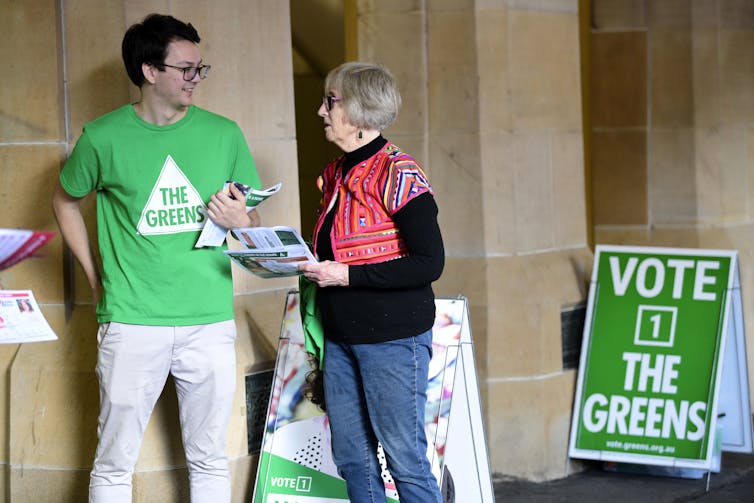Where are the Greens? As Di Natale leaves, Bandt must find a spotlight for his party in a pandemic
- Written by Stewart Jackson, Lecturer, Department of Government and International Relations, University of Sydney
On Tuesday, former Greens leader Richard Di Natale gave his farewell speech to the Senate.
The party has now had six months to get used to its new leader, Adam Bandt. But COVID-19 has made the year far more challenging than the Greens could possibly have expected when they swapped leaders back in February.
What does Di Natale leave behind?
Di Natale leaves parliament having been a senator for ten years and the party’s leader for five.
After his surprise resignation to spend more time with his young family, Di Natale (a medical doctor by background) now leaves parliament at the height of a pandemic.
His legacy can best be seen as a steadying one: he stabilised the party after it suffered a form slump at the 2013 federal election - where the Greens had a swing of more than 3% against them in the lower house. This followed the bad blood and bad publicity of the power-sharing agreement with the Gillard Labor government.
In 2015, when Di Natale became leader, the party was also riven by infighting in NSW and Victoria, with Queensland recovering from earlier internal divisions.
Yet by 2019, these tensions were largely resolved, with Di Natale successfully taking a hands-off approach, in contrast to his more interventionist predecessors.
Read more: How Bob Brown taught Australians to talk about, and care for, the 'wilderness'
And while the party has still not managed to increase its lower house representation (from one), the Greens retained all six of its senators up for re-election at the 2019 federal election.
So when Bandt took over as leader, he started on the front foot.
The change to Bandt
Back in February, the Greens were sad about Di Natale’s departure (who was for the most part well-liked), but genuinely excited about their future with Bandt at the helm.
 Adam Bandt took over from Richard Di Natale as Greens leader in February.
Erik Anderson/AAP
Adam Bandt took over from Richard Di Natale as Greens leader in February.
Erik Anderson/AAP
The summer’s massive bushfires had driven climate change to the forefront of the Australian political agenda and Bandt, having taken over from Di Natale in a swift transition, was riding a wave of media attention.
As a former industrial lawyer, his more combative style was seen to be perfectly suited to fights over energy, environment and direction of the economy.
Read more: Adam Bandt will be a tougher leader, but the challenge will be in broadening the Greens' appeal
At the time, Bandt was enthusiastically spruiking his plans for a Green New Deal as a way to take the climate debate forward and his party to the next federal election.
But fast forward to Di Natale‘s valedictory speech and we also fast forward to the question: where are the Greens?
The COVID challenge for the Greens
This year has of course been overshadowed by COVID-19. There is no escaping the global pandemic. And this presents a big challenge for Bandt and the Greens.
The media’s hyper-attention on COVID has meant that unless you are the prime minister, a senior minister, state premier or chief health officer, there is little public airtime available for other people or issues.
 COVID-19 has seen the media and public’s attention focus on the pandemic at the expense of other issues.
James Ross/AAP
COVID-19 has seen the media and public’s attention focus on the pandemic at the expense of other issues.
James Ross/AAP
So, it’s no surprise Bandt has struggled to break through with the Greens’ big priorities: discussion of climate change, environmental degradation (itself a risk when it comes to new diseases), or a federal anti-corruption commission.
There are opportunities for the Greens
However, there is light on the horizon. The glow around Prime Minister Scott Morrison over the initial containment of COVID-19 has faded as a second wave has bitten hard in Victoria. Anger grows over the handling of aged care during the pandemic.
There are also concerns around upcoming cuts to COVID-related payments, which opens up space for the Greens’ social welfare agenda. Debates about how to structure our post-COVID economy and society also present opportunities for the party.
With the ALP continuing to appear divided on energy and climate issues, the Greens have a further opening to pursue their signature policies.
So, there will be renewed scope and space for Bandt to make interventions on issues that directly affect individuals’ lives.
State elections and power-sharing questions
At the state/ territory level, watch out for two electoral tests for the Greens (and by proxy, Bandt’s leadership) in October.
In Queensland, the party will be looking to add one to two seats in central Brisbane to its currently held seat of Maiwar. In the ACT, the Greens will want to see a return of their power-sharing deal with Labor, which available polling suggests is likely.
Bandt has recently been talking up the potential of another power-sharing arrangement at the federal level with Labor.
While the ALP is dismissive of these overtures, they may not have that luxury if it comes down to a choice between government or opposition. The ongoing Labor-Greens arrangement in the ACT remains a clear sign the parties can - and perhaps should - work together.
Read more: Politics with Michelle Grattan: Adam Bandt on Greens' hopes for future power sharing
Can the Greens afford to relax?
Meanwhile, we also need to consider that there is probably more than a year until the next federal election. It might be argued the party can coast for now - at least at the federal level.
According to Newspoll, the party’s lower house primary vote is sitting at about 11%. This is down from 13% in February, but around the 10.4% the party polled in the lower house on election day in May 2019.
 According to the latest Newspoll, the Greens are sitting on a primary vote of 11%.
Bianca De Marchi/AAP
According to the latest Newspoll, the Greens are sitting on a primary vote of 11%.
Bianca De Marchi/AAP
Bandt’s focus now could be more on building up his Green New Deal plans - to come out with a bang when the best opportunity presents.
Nevertheless, the Greens need to keep trying to find ways to be seen and heard. Otherwise, if Bandt and his party are out of the headlines for too long in the middle of a crisis, there is the risk voters may see the Greens as irrelevant.
Authors: Stewart Jackson, Lecturer, Department of Government and International Relations, University of Sydney




